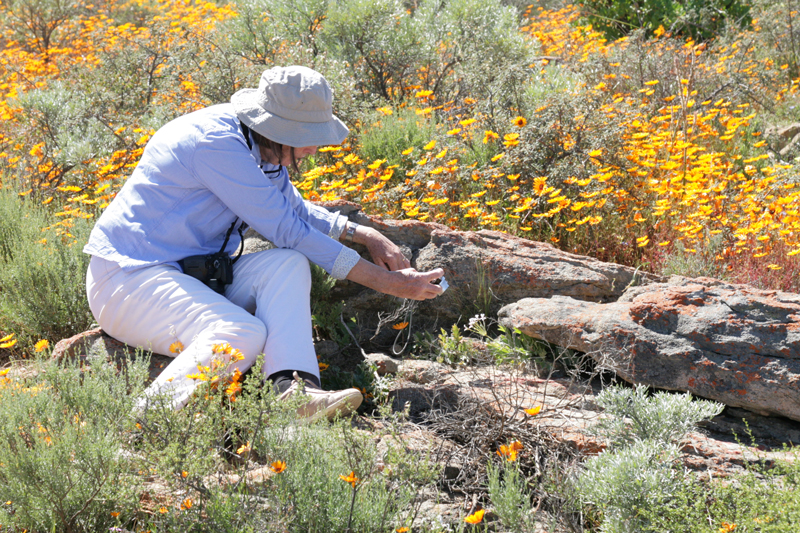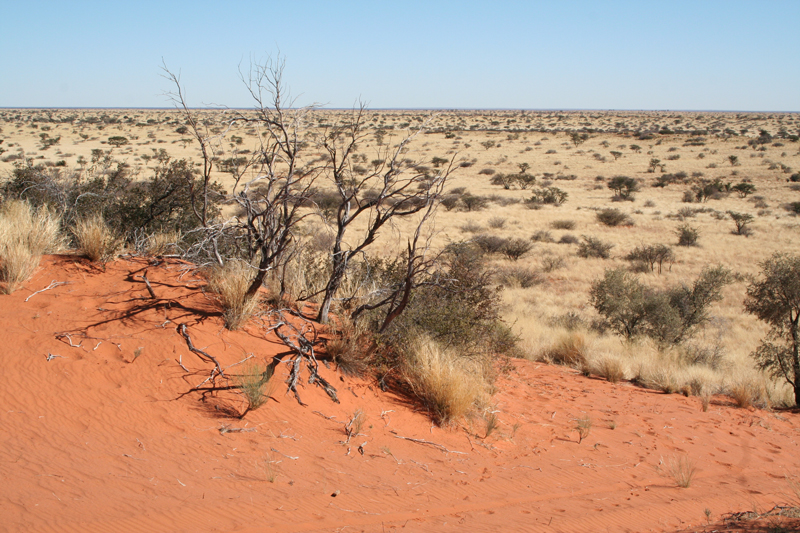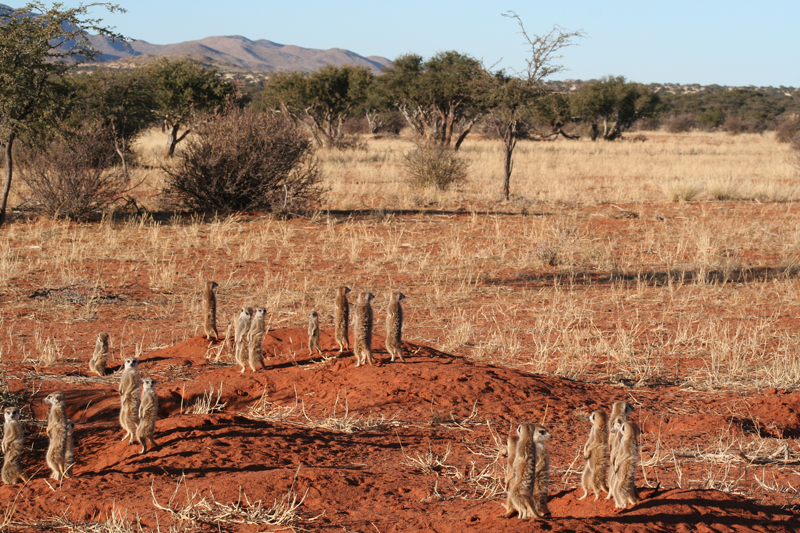The West of South Africa including Tswalu Kalahari, Kgalagadi and the Northern Cape
The central province of the Free State is not usually visited except by those doing an extended tour of the country.



Much of the province is fairly flat farming country (vast fields of maize and wheat) although the main route between KwaZulu/Natal and the Eastern Cape bordering western Lesotho is particularly scenic, especially around the Golden Gate National Park and the towns of Clarens, Ficksburg and Bethlehem.
Kimberley, famous throughout the World for the discovery of diamonds in 1866, is home to the Big Hole, a number of interesting museums, and a bastion of colonial times, the Kimberley Club.
The Trans-Kgalagadi Frontier Park was the first Peace Park developed by combining the former Kalahari Gemsbok National Park in South Africa, and the Gemsbok and Mabuesehube National Parks in Botswana. The park is dominated by the dune landscape of the region. There are only four roads in the park suitable to two-wheel drive vehicles, all of which are on the South African side – two follow the water courses of the Nossob and Auob rivers and have numerous ‘loops’, with the other two joining the river roads by travelling in a roller coaster manner over the dunes. Accommodation is available at a number of National Parks restcamps including Twee Rivieren, Mata Mata, Kalahari Tented and Nossob, but only Twee Rivieren has restaurant facilities. There are also a number of remote bush camps which are accessible by 4×4 only – there is no permanent accommodation in the Botswana section.
Game viewing is best along the river courses which are scattered with waterholes providing a lifeline to the region. The vegetation is predominantly that of desert scrub, with trees found along the rivers. During the rains, the river courses are transformed into seas of grass. For such an arid environment, the area is incredibly diverse. The raptor population is exceptionally good and makes up nearly 20% of the total number of resident species. Of the mammals, lion, cheetah, leopard, and wild cat are reasonably common. It is however the stately Gemsbok, dainty Springbok and diminutive meerkat for which the park is most remembered.
Tswalu Kalahari Game Reserve was born in the early 1990’s when a British entrepreneur purchased the vast tracts of arid farmland within the Northern Cape to live out a dream. Following his untimely death, the Oppenheimer family bought Tswalu in 1999 to create the largest privately owned game reserve in South Africa, covering an enormous 100,000 hectares of dry Kalahari savannah. The reserve includes three distinct zones – the rocky Korranaberg Mountains in the east, the Kalahari plains and dune-ridge system in the central part of the reserve and the wild calcrete pans and thorn scrub habitat of the western part of the reserve. The reserve is split by a remote gravel road (public) running north to south, with 20,000 hectares of reserve found to the east of the road. To the west of the road, where the lodges are located, there are 80,000 hectares of wilderness. The reintroduction of many of the species of wildlife formerly indigenous to the region has allowed the reserve to develop as a fine wildlife destination. Today over 40 species of animals can be seen, with the key absentee being elephants. The reserve offers spectacular meerkat viewing, with three habituated meerkat families. There are also over 200 species of birds recorded.
In north-western South Africa, the remote 4×4 access-only Richtersveld National Park forms a common boundary with Namibia’s Fish River Canyon. South of here, from the towns of Okiep and Springbok southwards to the Cederberg Mountains, is the spectacular Namaqualand. For around six weeks (August and September), and seemingly overnight, the dusty valleys of Namaqualand are transformed into a wonderland, carpeted with wild flowers. With its winter rainfall, Namaqualand is home to the richest bulb flora of any arid region in the world and more than a 1000 of its estimated 3500 plant species are found nowhere else on earth.
Namaqua National Park lies about 45 minutes drive west along a dirt road from Kamieskroon. The park is huge, but 2 wheel drive vehicles can only access the area known as the ‘Skilpad section’, close to the entrance gate. The carpets of flowers in this section are incredible. There is a circular drive which incorporates some look-out points, and a number of self guided walking trails (on reasonable paths if it is dry) through the flowers. The park has been described as typical Namaqualand ‘broken veld’, with a great variety of smaller succulents, as well as annuals and bulbous plants. It is also described as part of the succulent Karoo biome. The Namaqualand broken veld merges east into the mountain renosterveld of the Kamiesberg Range, part of the fynbos biome.
The Cederberg Mountains and West Coast National Park, some three hours drive north of Cape Town are also well worth visiting during this flowering spectacle. Small fishing villages dot the Atlantic coastline, many still reflecting the early pioneering spirit of early explorers into this very harsh country.

